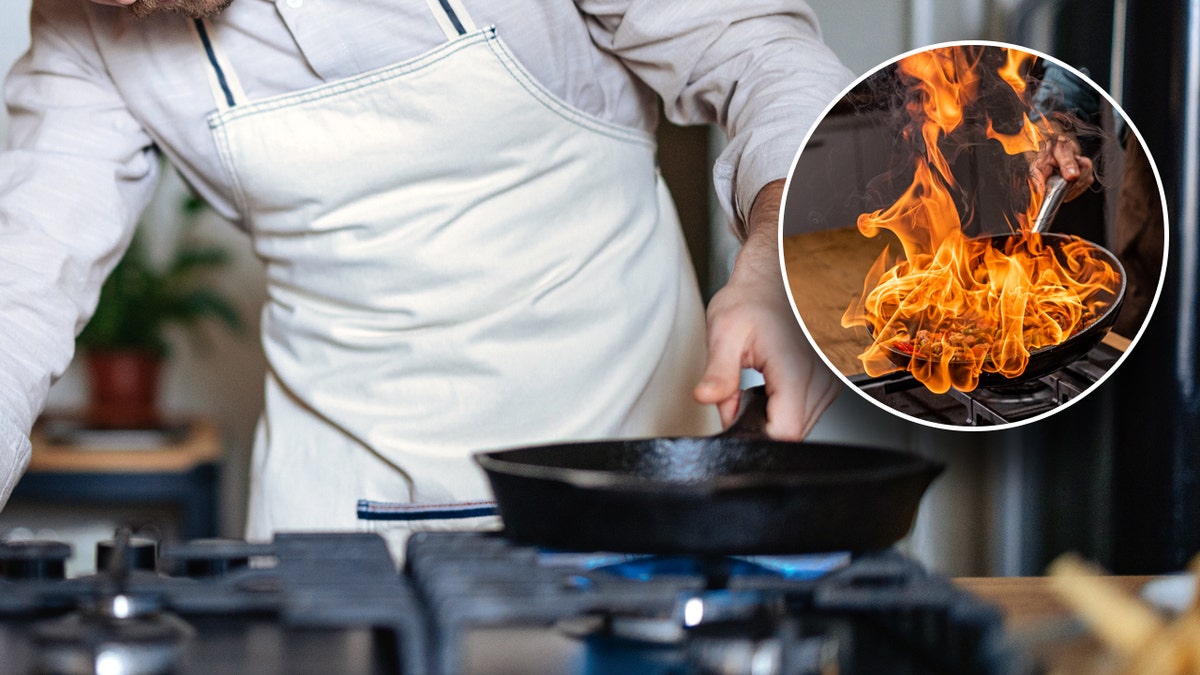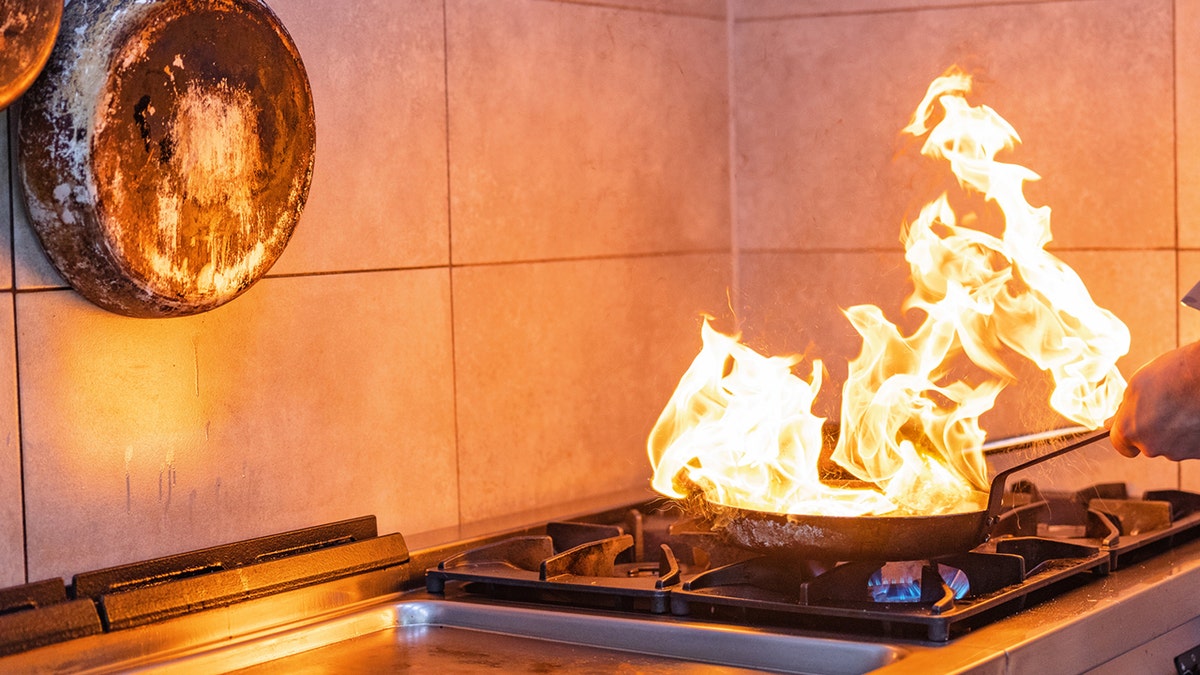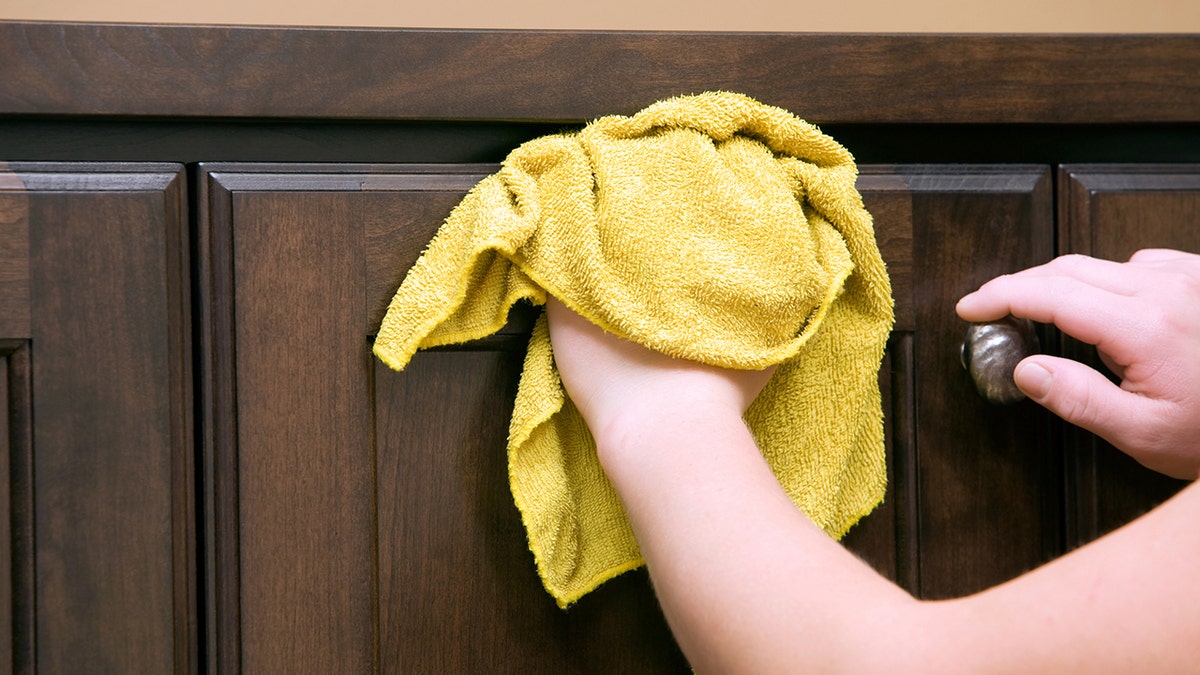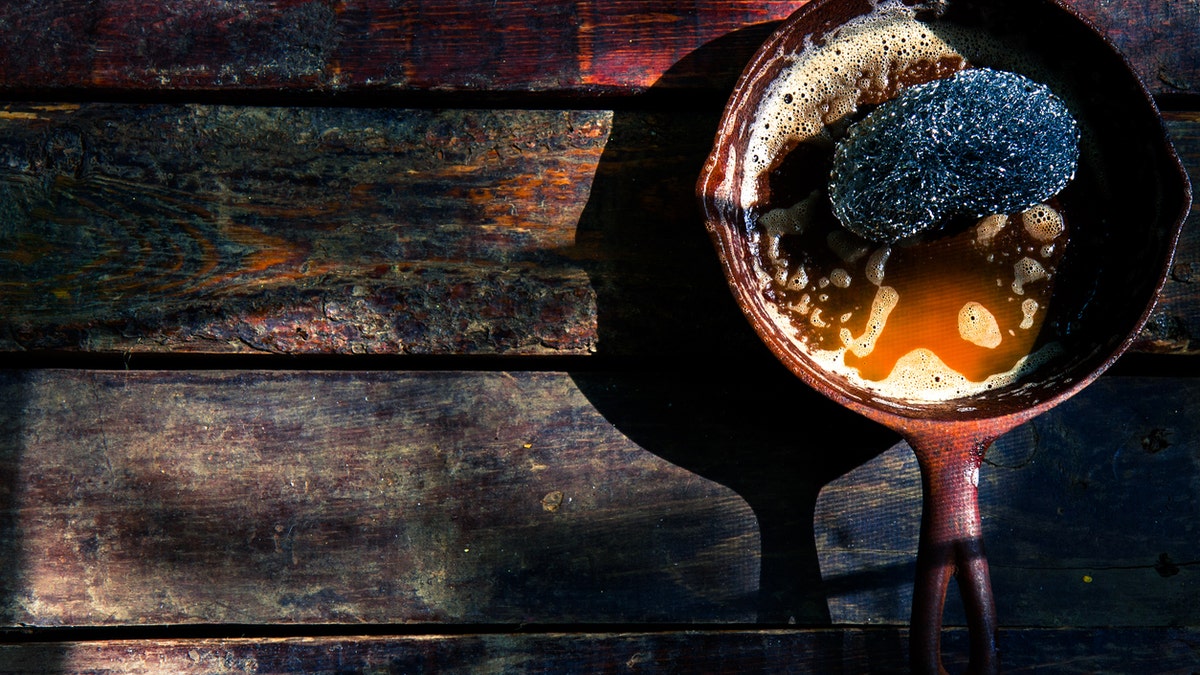Fox News Flash top headlines for May 29
Fox News Flash top headlines are here. Check out what's clicking on Foxnews.com.
Kitchen disasters of all types can happen to anyone.
Maybe a meal that's being prepped on the stove suddenly goes up in flames.
Maybe all the food cooked in the microwave tastes off somehow.
FOOD FIGHT AT RESTAURANT RUNS DEEPER FOR FAMILY THAN JUST ONE NIGHT OUT: ‘THINK CAREFULLY’
Or maybe oil from a container has leaked onto stone counter tops — leaving a stubborn and unsightly stain.
What to do? How to handle these and other mishaps and misfortunes?

Kitchen mishaps can happen to anyone. Here are some tips and tricks to address some common and sometimes scary occurrences. (iStock)
Fox News Digital reached out to a variety of home, kitchen and cleaning experts and sources to seek tips and advice for common dilemmas.
Here's smart advice to take in case these five scenarios occur in your home.
1. Stovetop fires
Anyone encountering an unexpected flame on a stovetop while cooking needs to exercise extreme caution during this scary situation — and be sure not to accidentally make a fire worse.
Do not ever use water to put out a stovetop fire that originated with oil, Andy Bozzo, battalion chief of Contra Costa County Fire Protection District in Northern California, told Fox News Digital. Bozzo is also co-founder of Tablet Command, an incident management software company.
"Stay calm, slide a lid over the fire and turn off the heat."
"Water can exacerbate the fire and spread it quickly out of the container into larger areas of the kitchen," Bozzo said via email.
To fight the fire, Bozzo advised people to "stay calm, slide a lid over the fire and turn off the heat." Flour, sugar, or baking powder should not be used to smother the fire.
Covering the fire removes the source of oxygen, he said, while turning off the stove will remove the heat source.

Never put water, flour, baking powder or sugar on a grease fire. (iStock)
"When you feel comfortable and the pot or pan has cooled, take the lid and pot outside," he said.
If a fire goes beyond the pot, Bozzo recommends using a "dry chemical extinguisher" that is specifically labeled for use for kitchen fires. "Aim the contents of the extinguisher at the base of the fire," he said.
COTTAGE CHEESE BAKING HACK BLOWS UP ON TIKTOK
But if a fire spreads into cabinets or past the oven, it is probably too big to fight on your own, he said.
"Get everyone out of the house and call 9-1-1 immediately from outside the home," he said.
2. Smelly microwaves
Other mishaps can occur in the kitchen that don't rise to the level of fire — but are still pesky and problematic.
To get rid of stubborn smells in the microwave, use a lemon, San Diego-based Chantelle Hartman Malarkey, known as the "Lifestyle Alchemist," told Fox News Digital via email.
"Place a small bowl of water with a half cut-up lemon in it and microwave it for one minute," she said.

A stinky microwave can be remedied with a sliced lemon and a cup of water, said one expert. (iStock)
In addition to cleaning the microwave, the lemon scent removes any lingering odors, she said. "This is an easy solution and a game-changer," she said.
Sliced lemons can also be used to deal with fridge odors, Malarkey added — and a sliced lime topped with salt can be used to brighten dull metal fixtures.
FARMERS MARKET FOOD-SHOPPING SECRETS IN 5 KEY CATEGORIES: ‘GET THE BEST QUALITY’
Lemon juice can also be used in a pitch as a "DIY stain remover," Malarkey told Fox News Digital, if food or drinks were to spill on fabrics.
"Add some lemon juice, baking soda, white vinegar, a little dish soap and some water to a bowl and apply to the stain," she said.
3. Countertop stains
Discovering a stain on a marble or quartz countertop can be a distressing experience, U.K.-based home remodeler Matthew O’Grady told Fox News Digital.
"Marble is porous and can be etched by acidic materials," he said. O'Grady is director of Thomas Matthew Kitchens & Furniture.

Marble is porous, so it can stain fairly easily. An expert shared wise ways to handle stain removal. (iStock)
"To help lift stains, make a paste with baking soda and water," he said. This paste should be applied to the stain, covered in plastic wrap, and sit for "at least 24 hours" before being wiped away.
Quartz countertops, while "generally more resilient" than their marble counterparts, are also subject to stains.
"Stay away from harsh chemicals, as these can harm the surface."
"A solution of warm water mixed with mild dish soap or a non-abrasive cleaner should work well," said O'Grady.
AS ‘MANIC CLEANING’ TRENDS ON TIKTOK, PSYCHOLOGISTS REVEAL REASONS, RISKS BEHIND IMPULSIVE TIDYING
He said people should "stay away from harsh chemicals, as these can harm the surface."
Instead, "brush away with an extra toothbrush laying around — works like magic!"
4. Scratches and dings on cabinets
There are easy solutions for fixing scratches, stains, and dings in wooden furniture and cabinets, said O'Grady.
Water rings on wooden surfaces can be buffed out with toothpaste, he said, before applying wood polish "to bring back the luster."

Scratches in cabinets or other wood furniture can be buffed out using a small amount of mineral oil, said one expert. (iStock)
Minor scratches on wooden surfaces can sometimes be remedied by "an oil-and-vinegar paste or a small amount of mineral oil," he said.
"Using a gentle cloth, apply the mixture to the scratch; allow it to sit for a few minutes, then buff it out," said O'Grady.
Deeper scratches, on the other hand, "may require the use of a wood filler that complements your surface — which should be followed by careful sanding and refinishing."
5. Rusted cast-iron pans
While soap should not be used to clean cast iron, all is not lost if the pan takes a trip through the dishwasher.
8 KITCHEN GADGETS TO TAKE YOUR COOKING TO THE NEXT LEVEL
Still, exposing a cast iron pan to excessive moisture can cause rusting, said the website for Loge Cast Iron.

A rusted-out cast iron can be saved with a bit of oil — and with the help of a hot oven. Read on to learn more. (iStock)
The first step to restoring a cast iron is to scour it, said Loge.
This can be done with warm, soapy water, plus a metal scouring pad.
"It's OK to use the scouring pad and soap since you are preparing to re-season the cookware," said Loge. "Rinse and hand-dry thoroughly."
CLICK HERE TO SIGN UP FOR OUR LIFESTYLE NEWSLETTER
After the cookware has dried, rub a "very thin" layer of cooking oil on the inside and outside of the item, said Loge.
The oiled cast iron should be put upside-down in a hot oven for an hour.
This oil coating will help to create a barrier that will "season" the cast iron.
Next, the oiled cast iron should be put upside-down in a hot oven for an hour.
CLICK HERE TO GET THE FOX NEWS APP
"Place the cookware in the oven upside down on the top rack and place aluminum foil on the bottom rack to catch any excess oil that may drip off the cookware," said Loge.
This process can be repeated as necessary — with the cookware cooling in between bakes.
For more Lifestyle articles, visit www.foxnews.com/lifestyle.

